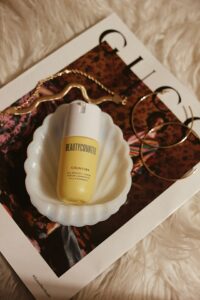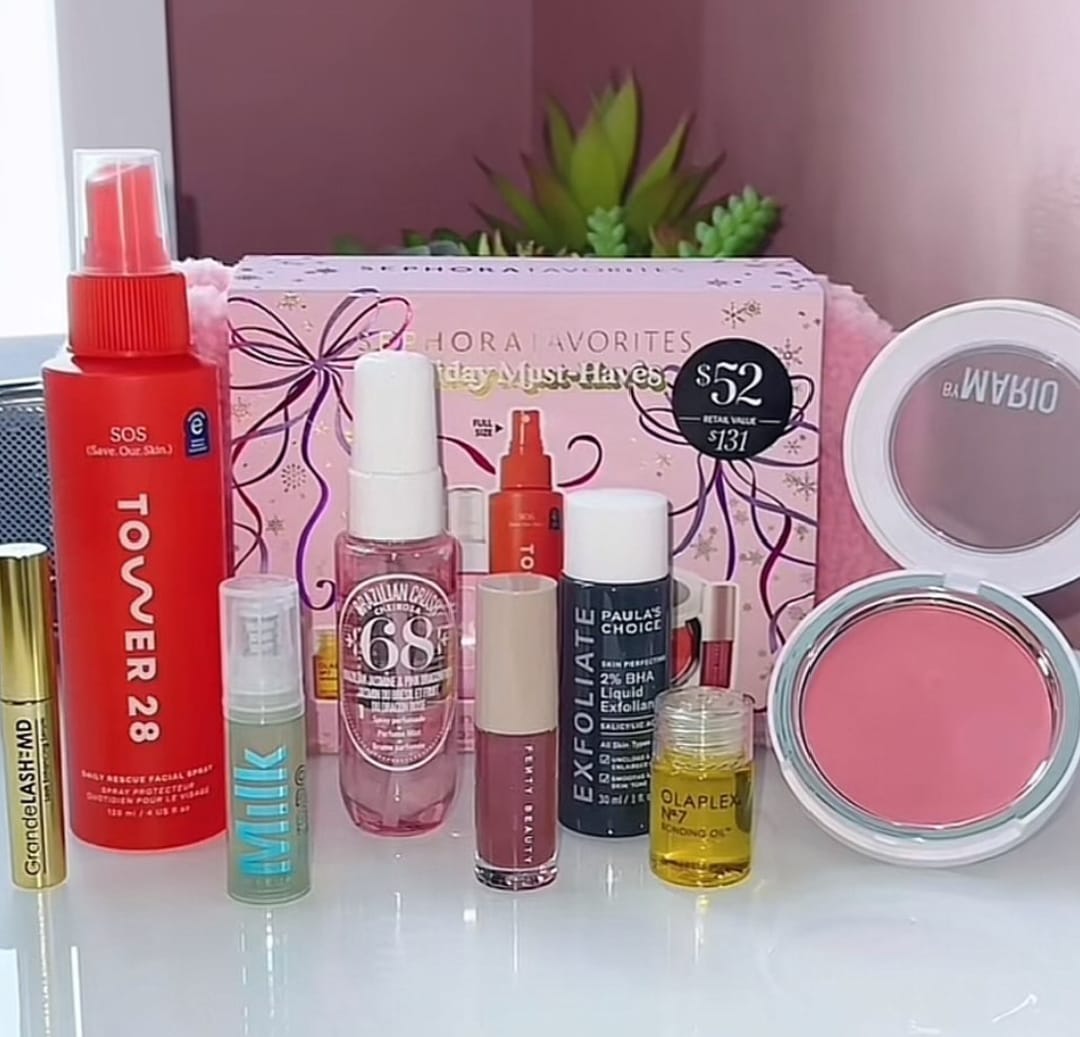
Sustainability and Eco-Friendly Practices
The beauty industry is undergoing a significant transformation as sustainability and eco-consciousness become increasingly important to consumers. Recent studies indicate that more than 70% of consumers are willing to pay a premium for sustainable beauty products, highlighting a strong market shift toward environmentally friendly practices. This growing preference is compelling brands to re-evaluate their sourcing, production, and packaging strategies to align with eco-friendly philosophies.
One notable trend is the adoption of clean and natural ingredients. Manufacturers are now prioritizing the use of biodegradable and non-toxic components in their formulations, reducing enviromental impact without sacrificing product efficacy. Brands are also focusing on transparency, enabling consumers to understand better what they are putting on their skin. This commitment to clean beauty is not only appealing to eco-conscious shoppers but is also fostering a culture of responsibility within the industry.
Furthermore, packaging plays a crucial role in the sustainability movement. Many beauty brands are innovating with recyclable and compostable materials, moving away from plastic-based containers that contribute to landfill waste. Some companies are even introducing refillable packaging systems, allowing consumers to reduce waste while maintaining their favorite products. This shift towards reaponsible packaging not only enhances the consumer experience but also reflects a brand’s commitment to the environment.
Cruelty-free testing methods are another vital aspect of sustainable beauty practices. Increasingly, brands are choosing alternative testing methods that comply with ethical standards, thereby ensuring that no animals are harmed in the product development process. This has become a significant selling point, as more consumers opt for brands that align with their ethical values.
In conclusion, as sustainability continues to shape consumer preferences in the beauty landscape, brands that prioritize eco-friendly ingredients, innovative packaging, and humane testing methods will likely lead the way in this evolving industry. The focus on sustainable practices notonly benefits the environment but also fosters a deeper connection between consumers and the brands they choose to support.
Technological Innovations in Beauty
The beauty industry is undergoing a significant transformation due to technological advancements. One of the prominent innovations reshaping this field is artificial intelligence (AI) in skincare analysis. Companies are now utilizing AI-powered tools to provide consumers with personalized skincare routines based on their unique skin types and concerns. These platforms analyze users’ skin conditions through images, taking into account factors such as hydration levels, pigmentation, and acne. By delivering customized recommendations, AI enhances the efficacy of skincare products and builds deeper consumer trust in brands.
Furthermore, augmented reality (AR) has emerged as a game-changing technology within the beauty sector. Virtual try-on applications allow consumers to experiment with different makeup products in real-time using their smartphones or computers. Brands like L’Oréal and Sephora have successfully integrated AR into their online platforms, enabling users to visualize how products will look on their faces before making a purchase. This interactive consumer experience not only boosts engagement but also reduces return rates by helping customers select the most suitable products.
The shift towards personalized beauty solutions is also gaining traction, with consumers increasingly seeking products tailored to their individual needs. Startups like Proven Skincare harness user data and machine learning to formulate bespoke products for each customer. This level of customization reflects a broader trend in the beauty industry — one that prioritizes consumer preferences and individuality. As businesses adopt these technologies, they not only enhance customer satisfaction but also cultivate brand loyalty.
In summary, technological innovations such as AI-driven skincare analysis and augmented reality in makeup applications are significantly enhancing the beauty industry. These advancements are not only improving consumer experiences but are also enabling brands to f orge lasting connections with their clientele, ensuring that they remain at the forefront of this evolving market.
Inclusivity and Diversity in Beauty Products
The beauty industry has experienced a significant transformation in recent years, primarily driven by a growing emphasis on inclusivity and diversity. A growing awareness of the need for a broader range of beauty products that cater to every skin type and tone reflects broader societal changes regarding representation and acceptance. Brands have recognized that the traditional beauty standards are often exclusionary, and thus, they have taken proactive steps to create more inclusive product lines. This shift is not just about expanding color palettes; it is about acknowledging the beauty in uniqueness and embracing every individual’s distinctive characteristics.
With consumers pushing for change, several beauty brands have launched campaigns to promote inclusivity. These campaigns often highlight individuals from diverse backgrounds, showcasing various skin tones and types. Influencers and social media have played a crucial role in amplifying these messages, allowing consumers to form communities centering around shared experiences and beauty standards. As a result, brands are more inclined to take feedback from their customer base, leading to the development of products that address the needs of an increasingly diverse clientele. For example, many cosmetic companies have expanded their foundation ranges to include shades suitable for deeper skin tones, while also considering skin undertones—a significant step towards more equitable beauty offerings.
Case studies of brands like Fenty Beauty exemplify the impact of inclusive practices. Launched by Rihanna, the line became renowned for its extensive foundation shade selection, offering 50 shades that cater to a wide spectrum of skin tones. This approach has inspired numerous other brands to follow suit, prioritizing diversity not just in product availability, but also in their advertiising campaigns. In this way, the beauty industry continues to evolve, embracing inclusivity as a standard rather than an exception, ultimately reflecting the beautiful diversity of its consumers.
Health and Wellness Influencing Beauty Trends
In recent years, the beauty industry has witnessed a significant shift towards health and wellness, with consumers increasingly prioritizing products and practices that promote overall well-being. This change is not merely a fleeting trend but rather a reflection of a deeper understanding of the relationship between health and beauty. As individuals become more health-conscious, their approach to beauty evolves, favoring clean beauty products that avoid harmful chemicals and emphasize natural ingredients.
Clean beauty, which focuses on transparency and safety in ingredients, has become a hallmark of contemporary beauty trends. Consumers are actively seeking out products that are free from toxic substances, such as parabens and sulfates, opting instead for formulations that harness the power of nature. This movement towards cleaner formulations underscores the growing perception that wellness is integral to personal care. The demand for cruelty-free and vegan products has also gained momentum, reflecting a broader ethical consideration in beauty choices.
Additionally, the wellness-centered skincare routine is gaining traction. Consumers are not only looking for products that enhance their appearance but also those that contribute positively to their physical and mental health. Skincare routines now emphasize mindfulness and self-care, merging beauty with practices that promote relaxation and stress relief. Brands are responding by creating products infused with adaptogens, botanicals, and essential oils that cater to both aesthetic desires and holistic wellness.
Furthermore, the increasing interest in ingredients that serve dual purposes—those that enhance beauty while delivering health benefits speaks to a broader consumer awareness. Ingredients such as hyaluronic acid for hydration and antioxidants for skin protection are being marketed with a focus on both their beauty-enhancing properties and their contributions to overall wellness. This evolution signifies a profound recognition that a person’s well-being is interwvoven with their outer appearance, paving the way for future innovations in the beauty landscape.





